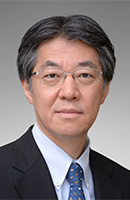Message from the President
Teaming Up to Challenge and Treat Heart Failure
– HF Team, Be Ambitious –

The 20th Annual Scientific Meeting of the Japanese Heart Failure Society will be held at the convention facilities near Odori Park in central Sapporo from Friday, October 7-Sunday, October 9, 2016. It is my great honor to serve as president of the 2016 meeting, as it marks the 20th anniversary since the founding of the society.
The 1st Scientific Meeting of the Japanese Heart Failure Society was held in October 1997 in Kyoto. It was established in response to the establishment of the Heart Failure Society of America and Heart Failure Association of the European Society of Cardiology amid growing domestic and foreign interest in heart failure, especially in understanding its mechanisms and in evidences based on large-scale clinical trials. The Society had 900 members at the time. With the expansion and strengthening of Society activities and the creation of a membership track in 2006 for a broad range of healthcare professionals ("B Members"), the society today has attracted nearly 2,700 members. In addition to basic, clinical, and epidemiological research, as well as translational and development research, the Society has made important contributions to the research and clinical practice of heart failure in Japan through its social activities as well.
Many researchers around the world, including Japanese researchers who have made important domestic and foreign contributions, are engaged in basic research to understand heart failure. Even now, cutting-edge technologies are being used to actively pursue research at the level of organs, cells, and even genes. In terms of clinical research, there have been remarkable advances in technologies that are exposing heart failure, including the identification of biomarkers through the use of biobanks, multimodality imaging, and comprehensive genetic analysis. Japan has produced much world-leading research in these areas. Even so, we are far from being able to say we understand the pathophysiology and mechanisms of heart failure. In addition to better coordination between cardiovascular medicine and basic medicine, broadly defined to include not only conventional fields such as physiology, biochemistry, pharmacology, and pathology but also genetics and social medicine, we also need to redouble our efforts to "challenge heart failure as a team" through collaborations that include both basic researchers and clinical physicians dedicated to better understanding heart failure-related medical conditions and developing new treatments. At the same time, as a result of an aging population, increased lifestyle diseases such as hypertension and diabetes mellitus, and the expansion of acute treatment and improvement of treatment outcomes for acute coronary syndrome, the number of heart failure patients is also growing. In particular, given the increasing rate of re-hospitalization among elderly patients with multiple comorbidities who face various social issues, such as living alone and caring for more elderly persons than themselves, heart failure has become a significant social as well as medical concern. While we have developed and expanded pharmacological and non-pharmacological treatments that prolong life expectancy despite heart failure, the hard reality is that such treatments can only do so much. We need to "treat heart failure as a team" of healthcare professionals that includes not only cardiologists and nurses but also physical therapists, pharmacists, nutritionists, clinical technicians, clinical engineers and medical social workers. This team will also need social innovation as one of its perspective, including input from not only academia but also industry and local government.
In view of the current state of heart failure research and treatment, the theme for this year's meeting will be "Teaming Up to Challenge and Treat Heart Failure: HF Team, Be Ambitious." We hope the meeting provides a fruitful opportunity to reflect on what we can and should do now as "a team with a common vision dedicated to challenging and treating heart failure."
The program this time includes invited talks by foreign speakers and other lectures on cutting-edge heart failure research from various perspectives, as well as educational sessions to deepen participants' understanding of a wide range of important issues. Of course, the meeting's main event are the research papers that participants present by themselves. We look forward to hearing reports on research findings from diverse perspectives and the opportunity for thorough discussion. We also have sessions planned to deepen exchange between as many cardiologists as possible with the goal of strengthening understanding of heart failure and better treating and managing patients.
Early October in Sapporo is autumn at its best. As the saying goes, "the sky stretches forever and no horse goes hungry." It is a truly wonderful season when the skies are blue and the air crisp and clean, and when the many celebrated tastes of Hokkaido are harvested from the fields and gathered from the mountains and seas. The three-day event will satisfy not only your brain but your stomach and spirit as well. I look forward to hearing from you.
The 20th Annual Scientific Meeting of the Japanese Heart Failure Society
President Hiroyuki Tsutsui
(Department of Cardiovascular Medicine,
Faculty of Medical Sciences,
Kyushu University)
